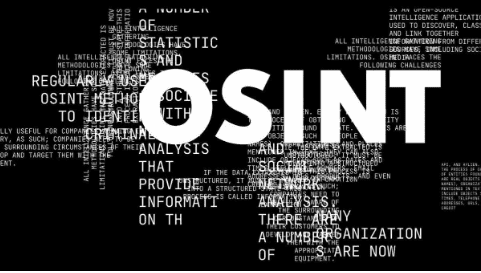Do you know about 40% of global Banking sectors adopted data analytics for effective decision making. Microsoft Power BI is a leading data analytics tool that helps your fintech business by making financial data easier to understand, solving the issue of complicated data analysis. This provides data in visual forms and can be integrated with any custom financial software.
Let’s look at the top use cases of Power BI in the Financial sector.
Real-time Analytics & Monitoring
Use Case: Being able to track KPIs in real time: monitoring customer acquisition, retention and engagement.
Benefits: Helps to detect outliers as well as trends and enables rapid decision-making toward optimizing operations and enhancing customer experience.
Since Finance’s need to be ahead of the curve, this calls for real-time analytics. Create interactive dashboards in Power BI that refresh quickly and are driven by customer behavior, market trends, and the financial performance of your business. By visualizing periodic data, you can respond swiftly when new opportunities or risks arise. These dashboards not only provide real-time insights but also uncover new paths of actionable information, allowing you to make informed decisions and stay ahead in a dynamic business environment.
Fraud Detection and Prevention
Pattern Recognition in Transaction Data for Fraud Detection Use Case
Advantages: Mitigate risks proactively and protect customer funds with more security measures.
Finance companies are especially concerned about fraud detection. But Power BI helps you in analyzing millions of transaction records to find behavioral patterns and trends that are far away from their average, which might be an indicator of potential fraud. Dashboard visualization of data is the best way to detect suspicious transactions and curb losses by taking timely action.
Managing Risks and Compliance Issues
Use Case: Provide comprehensive view and a comprehensive analysis of stress testing scenarios including risk metrics and data on regulatory compliance.
Benefits: Define risk exposure towards stress testing, determine the weaknesses, and ensure compliance targets are achieved.
Every financial institution prioritizes proper risk management to ensure stability and promote growth. Power BI allows for the visualization and analysis of various risks, including but not limited to credit risk, market risk, and operational risk. It also enables the real-time tracking and monitoring of these metrics, empowering institutions to identify and reduce risks effectively.
Customer Data Integration for Marketing Strategies
Use Case: Customers are to be grouped, and specific products be recommended using customer demographics, behaviors as well as purchasing preferences.
Benefits: Customer satisfaction will be improved, ability to cross sell and up sell opportunities improved and customers retention rate will be improved.
Having enough information about your customers enables you to have better relationships with them and even grow the business. Through the use of Power BI, one can classify his or her patrons into different categories such as age, occupation, interests and even behavioral data. Client data visualization allows marketers to know the right timing to issue out marketing messages, product promotions, as well as customized services.
Portfolio Management and Performance Analysis
Use Case: Evaluate the viability of returns on investments to understand how the portfolio is structured and assess the associated risk levels.
Benefits: Enhance investment policies, make rational choices, as well as find possibilities which in the past were impossible.
Portfolio management is critical for most investment and wealth management firms. Power BI helps visualize and analyze portfolio performance, risk measures, and allocation areas. By tracking the most relevant indicators and their trends, you can target the right investments and balance assets for better returns.
Financial Reporting and Forecasting
Use Case: Create financial documents that contain income, balance sheets, and cash flow statements, among others, in an accurate as well as timely manner.
Benefits: Meet the underlying financial reporting standards, facilitate the reporting process, as well as enable better governance.
The provision of relevant information, formatted in a timely manner, is a prerequisite for doing business successfully. BI can help you in removing the manual processes of coming up with relevant reports like income statements, balance sheets or cash flows, cash flow projections etc. Financial presentations on the other hand allow one to appreciate how the business is operating and identify where the management is not performing.
Operational Efficiency and Cost Optimization.
Use Case: Examine operational data in order to detect inefficiencies among bottlenecks and the cost savings that potentially exist.
Benefits: Streamlining of workflows, lowering of operational costs and improving the whole business performance.
I grew up in a developing country where Power BI is rapidly gaining traction as businesses expand beyond local markets. In this environment, reducing operational costs becomes a top priority due to tight margins. Streamlining operations and simplifying processes are key goals, and Power BI is crucial in achieving them. By analyzing operational data, Power BI identifies bottlenecks and uncovers cost-saving opportunities. It helps businesses visualize large datasets, revealing insights into employee performance, service effectiveness, and other key metrics. This ultimately drives continuous improvement.
Conclusion
Finance is an area where data-driven insights can transform business performance. Innovation through analytics is key to success. By using Power BI consulting services, companies can overcome financial analysis limitations, leading to better decision-making, improved client interactions, and streamlined operations. With expert guidance, organizations can leverage Power BI to drive growth, manage risks, and maintain excellent client service. Power BI becomes an invaluable tool for modern financial management.

As the editor of the blog, She curate insightful content that sparks curiosity and fosters learning. With a passion for storytelling and a keen eye for detail, she strive to bring diverse perspectives and engaging narratives to readers, ensuring every piece informs, inspires, and enriches.










